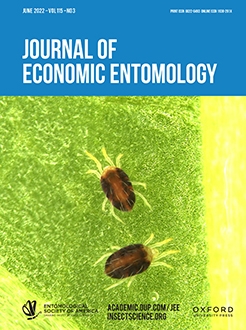There is interest in developing controlled release materials (CRMs) with novel modes of action to improve resistance management. Long-lasting insecticide-incorporated netting (LLIN) with deltamethrin has been effectively used against stored-product pests. Here, we evaluated the efficacy of different CRMs (LLIN or packaging) with each of four active ingredients (AI) (deltamethrin, permethrin, indoxacarb, and dinotefuran) and compared them to control CRMs in reducing movement and increasing mortality of phosphine-susceptible and -resistant Rhyzopertha dominica and Tribolium castaneum. Adults were exposed for 0.5, 2, or 60 min, and movement was assessed immediately or after 24, or 168 h using video-tracking and Ethovision software. We recorded total distance and velocity traveled by adults. Finally, we tested higher rates of each AI on surrogate netting material (e.g., standardized-sized cheesecloth) and varied exposure time to obtain median lethal time (LT50) for each compound and susceptibility. Exposure to LLIN with deltamethrin significantly reduced the movement of both species compared to the other CRMs regardless of their susceptibility to phosphine. Deltamethrin was the most effective AI for both species, while dinotefuran and indoxacarb were the least effective for R. dominica and T. castaneum adults, respectively. Most AIs resulted in appreciable and approximately equivalent mortality at higher concentrations among phosphine-susceptible and -resistant strains. Our results demonstrate that CRMs can be an additional approach to combat phosphine-resistant populations of stored product insects around food facilities. Other compounds such as permethrin, dinotefuran, and indoxacarb are also effective against phosphine-resistant populations of these key stored product insects except indoxacarb for T. castaneum.
Graphical Abstract






